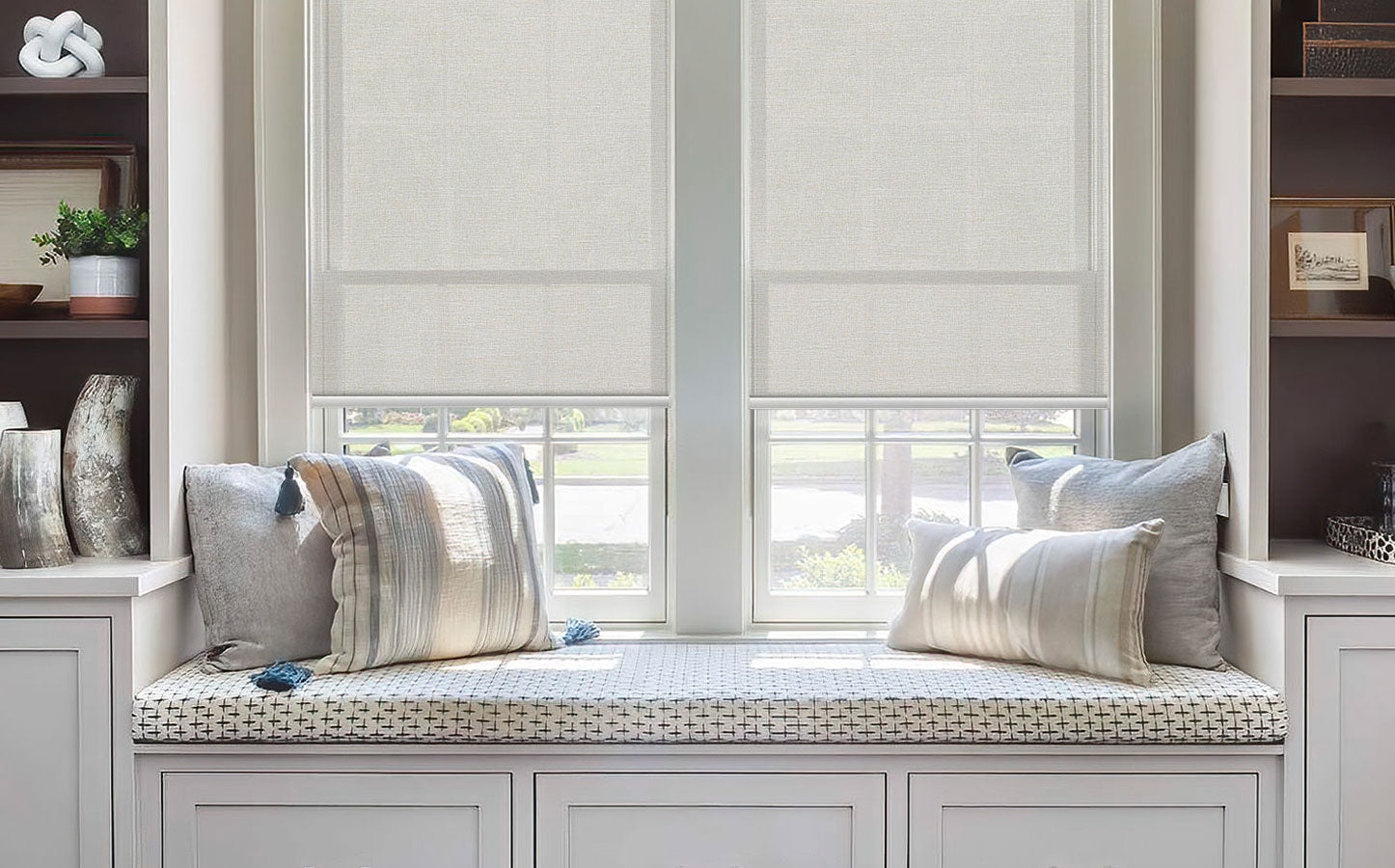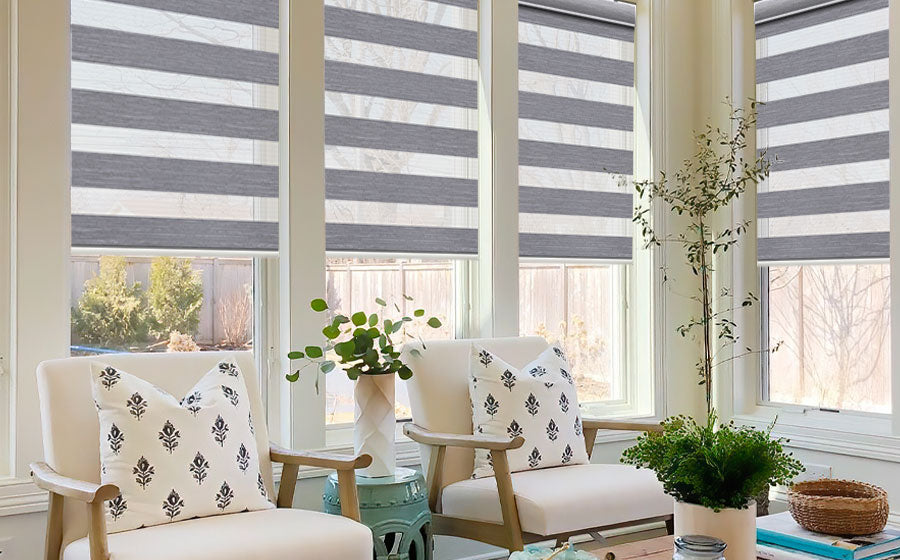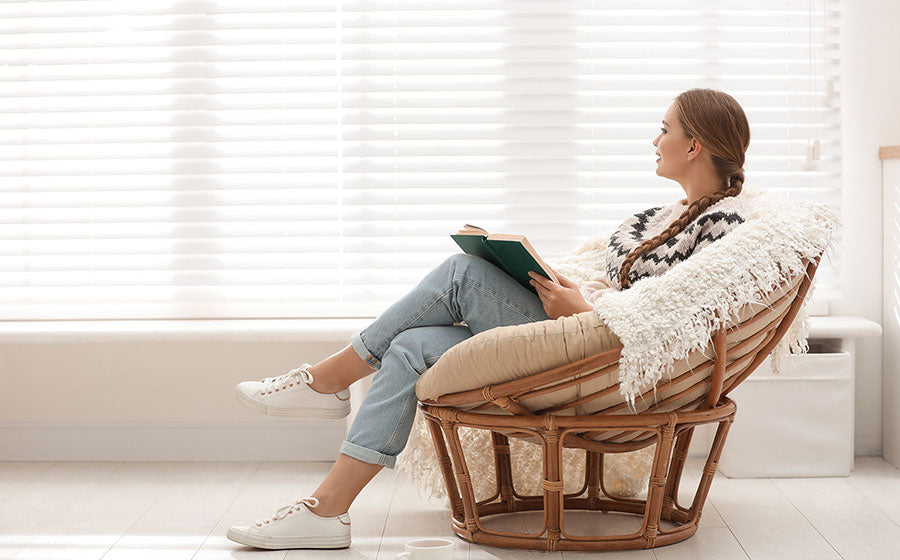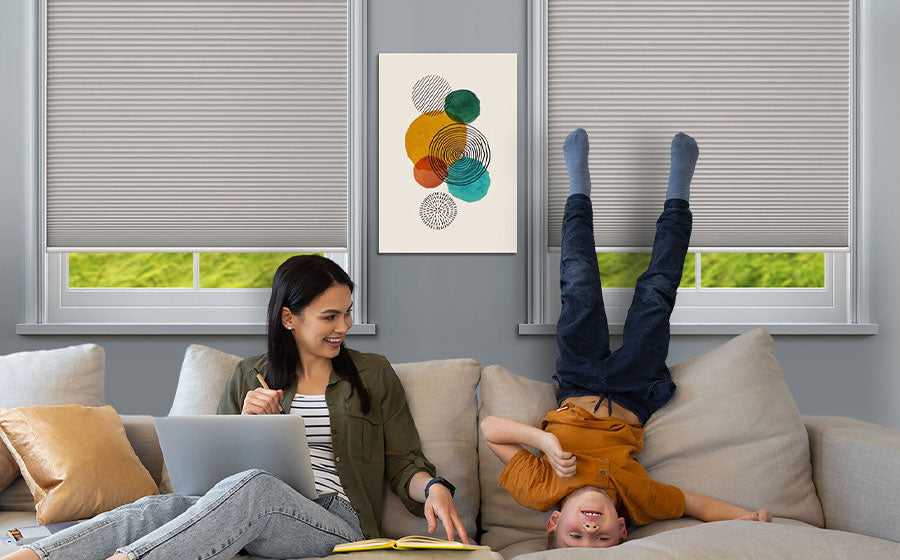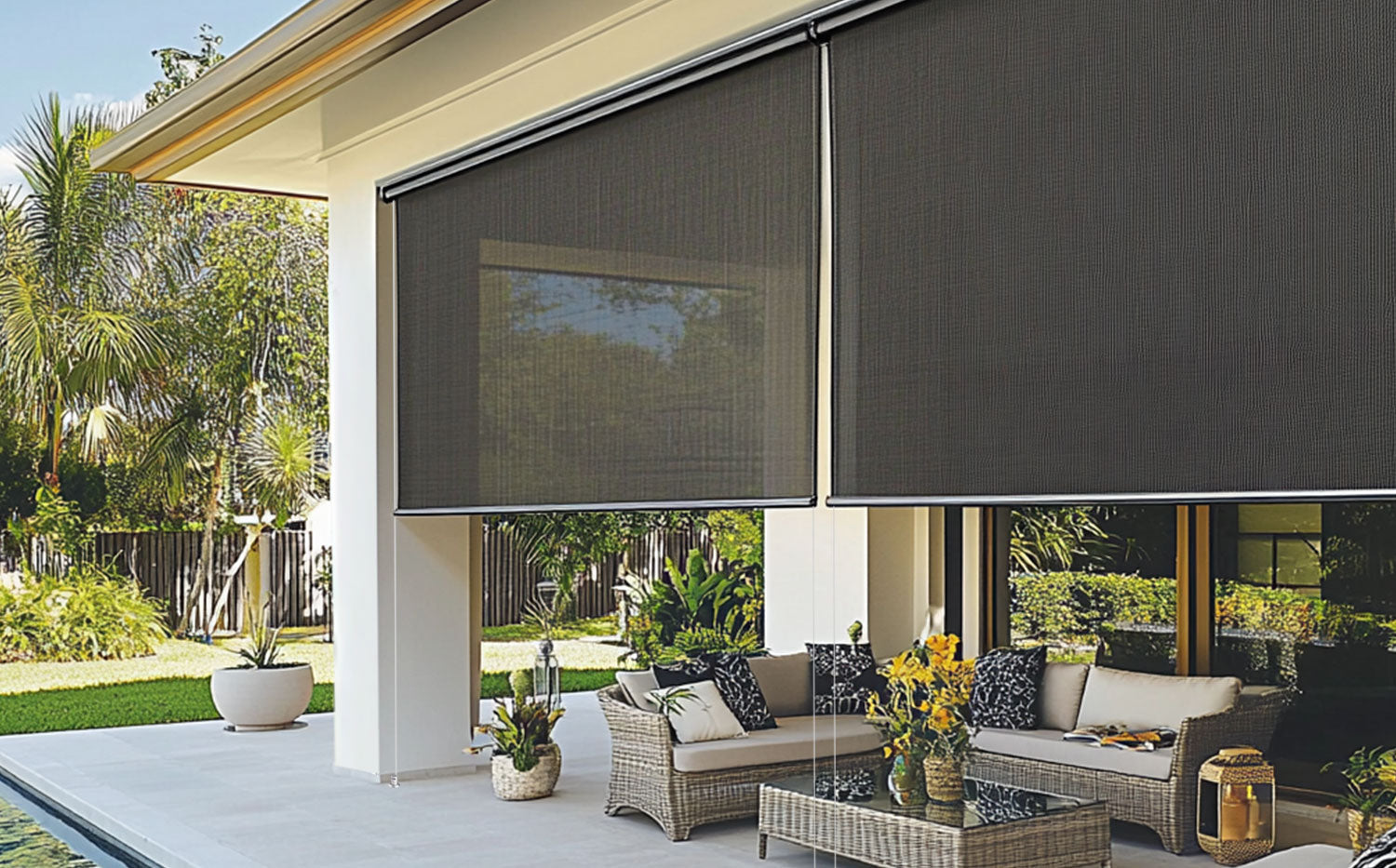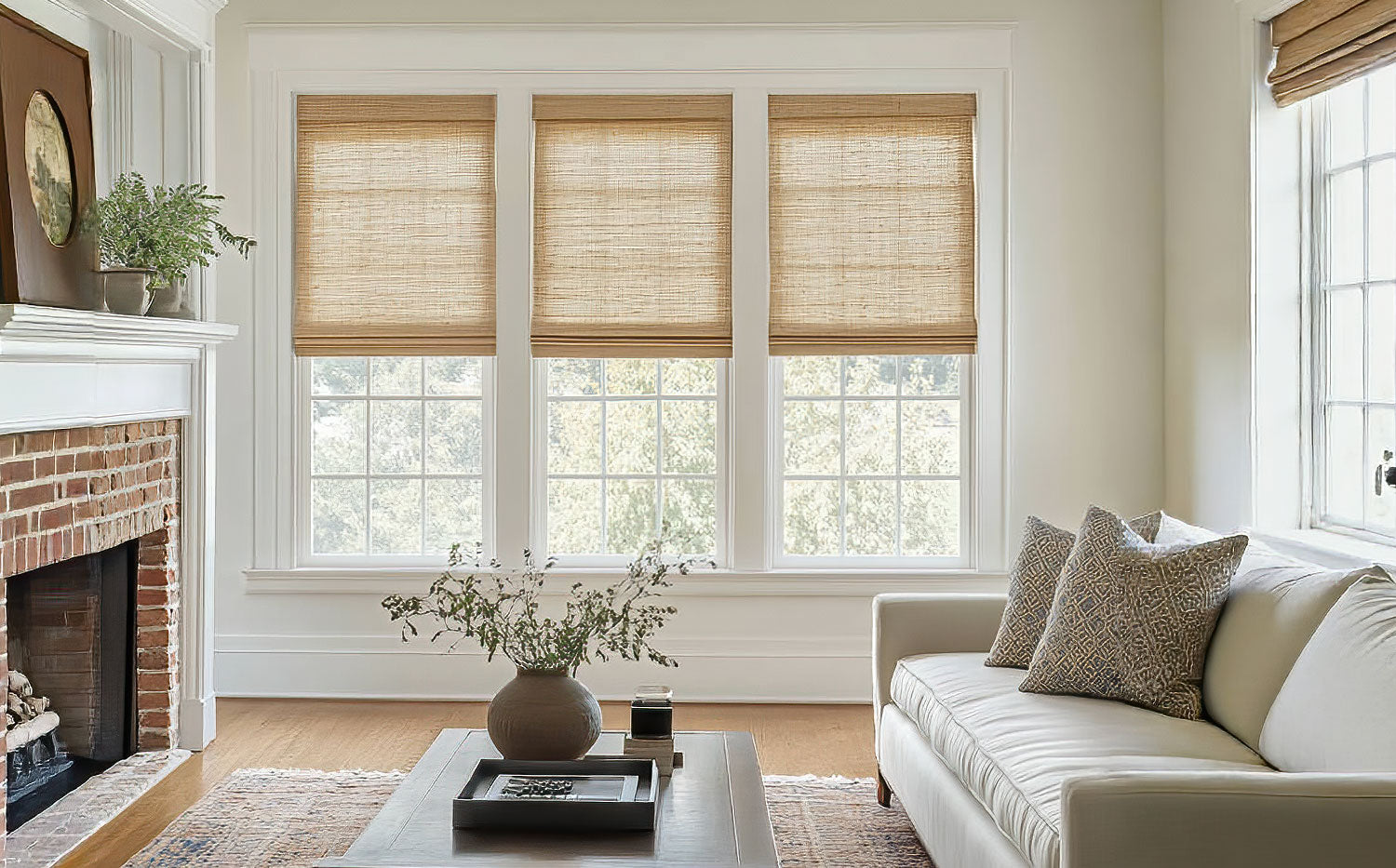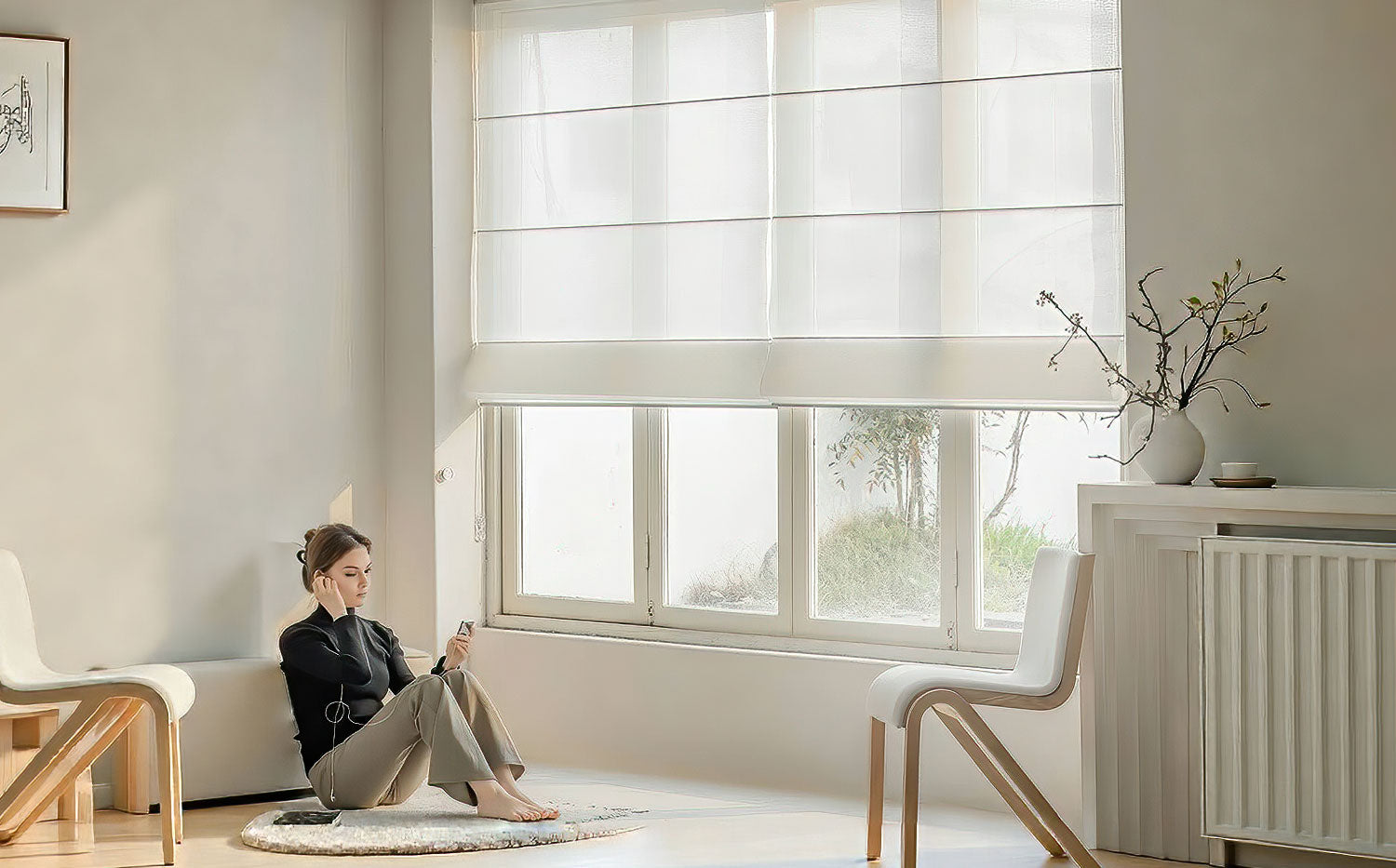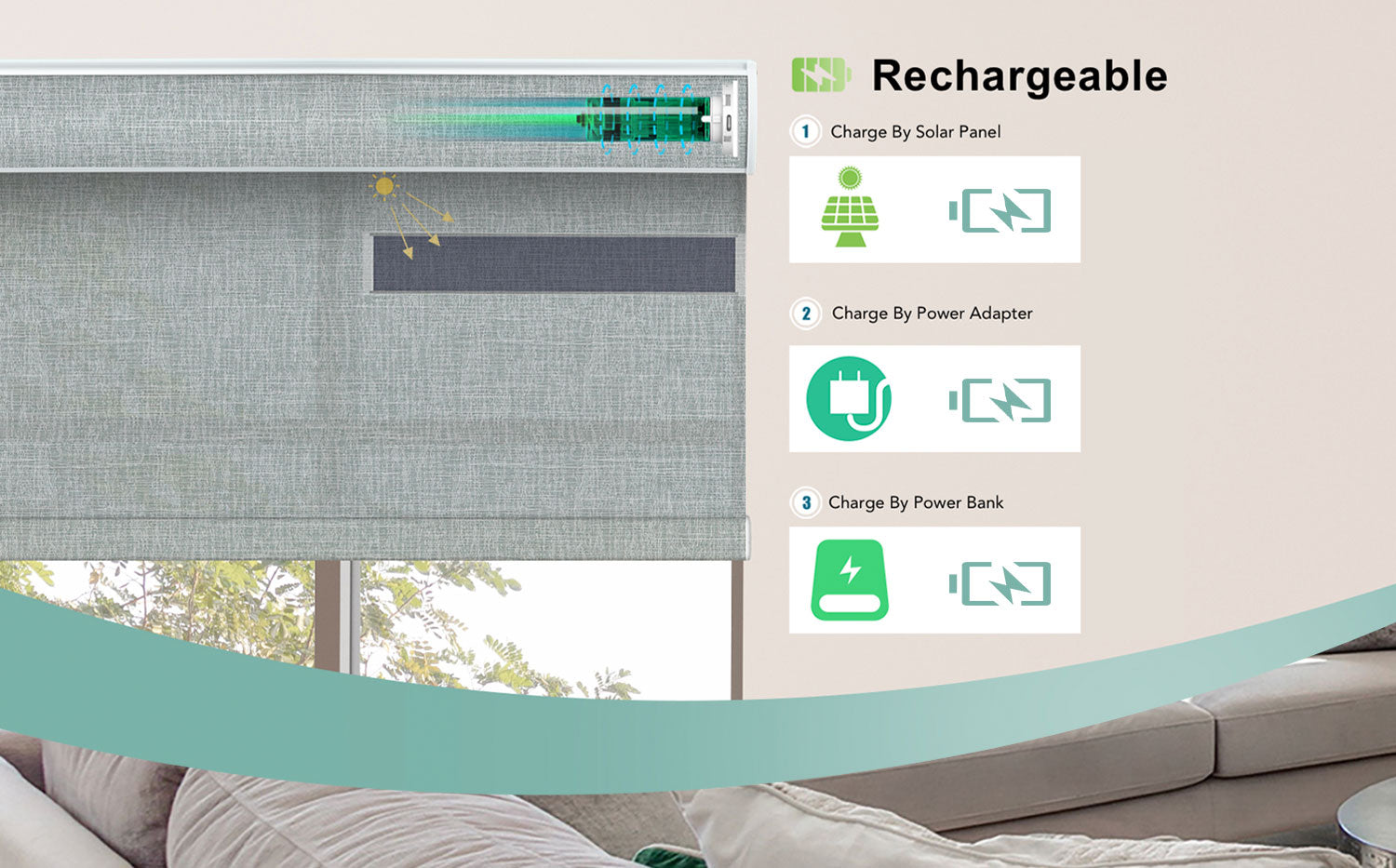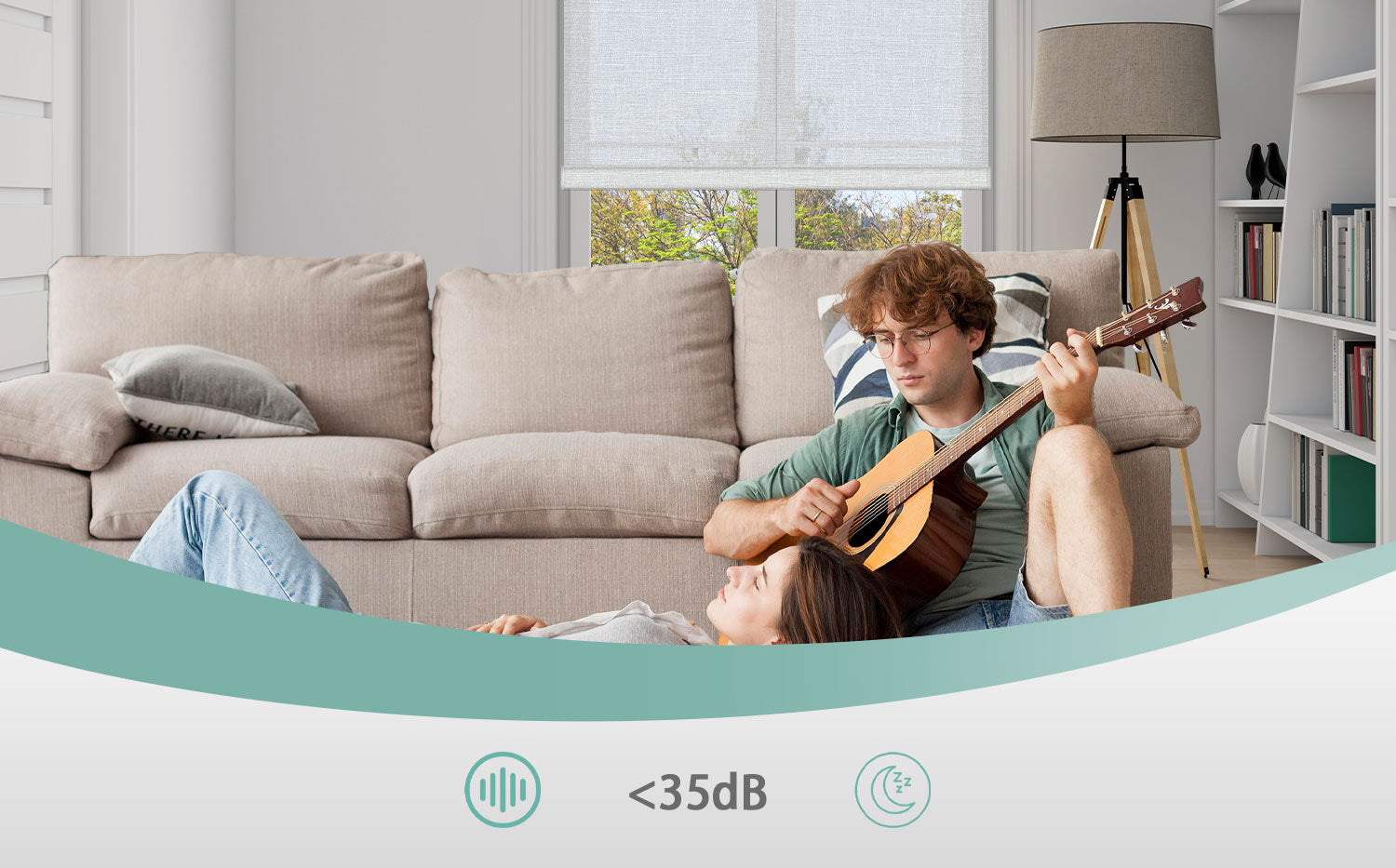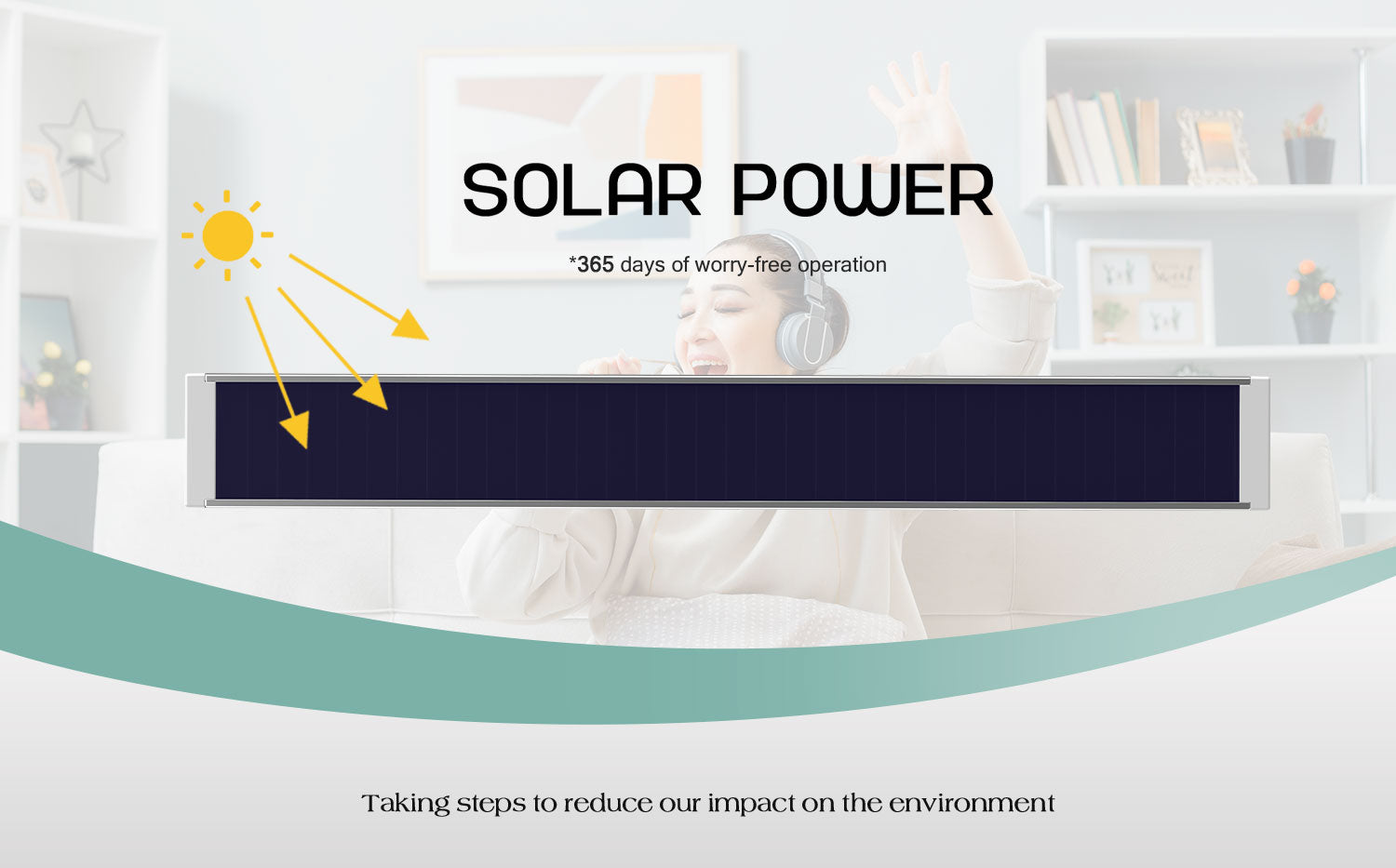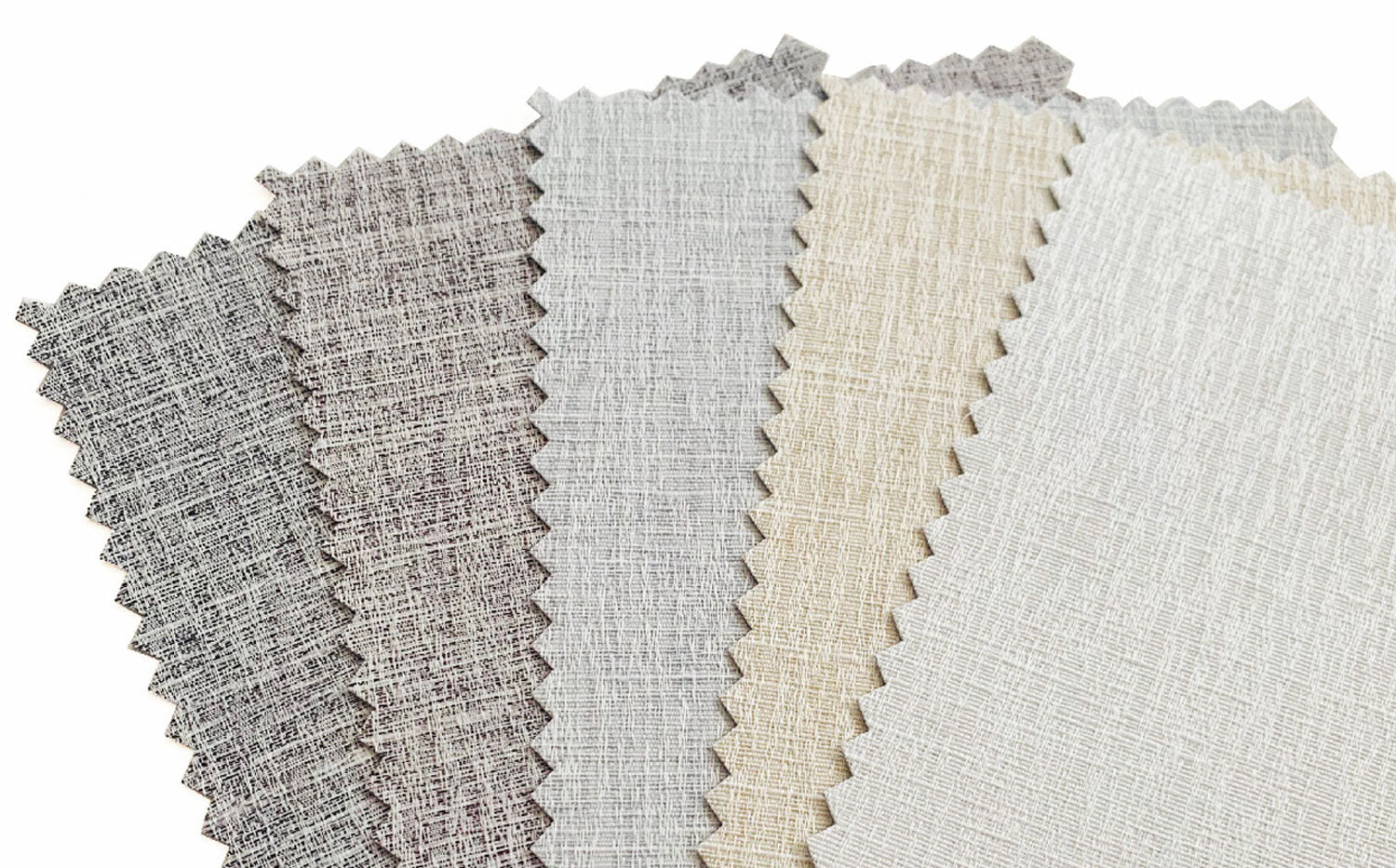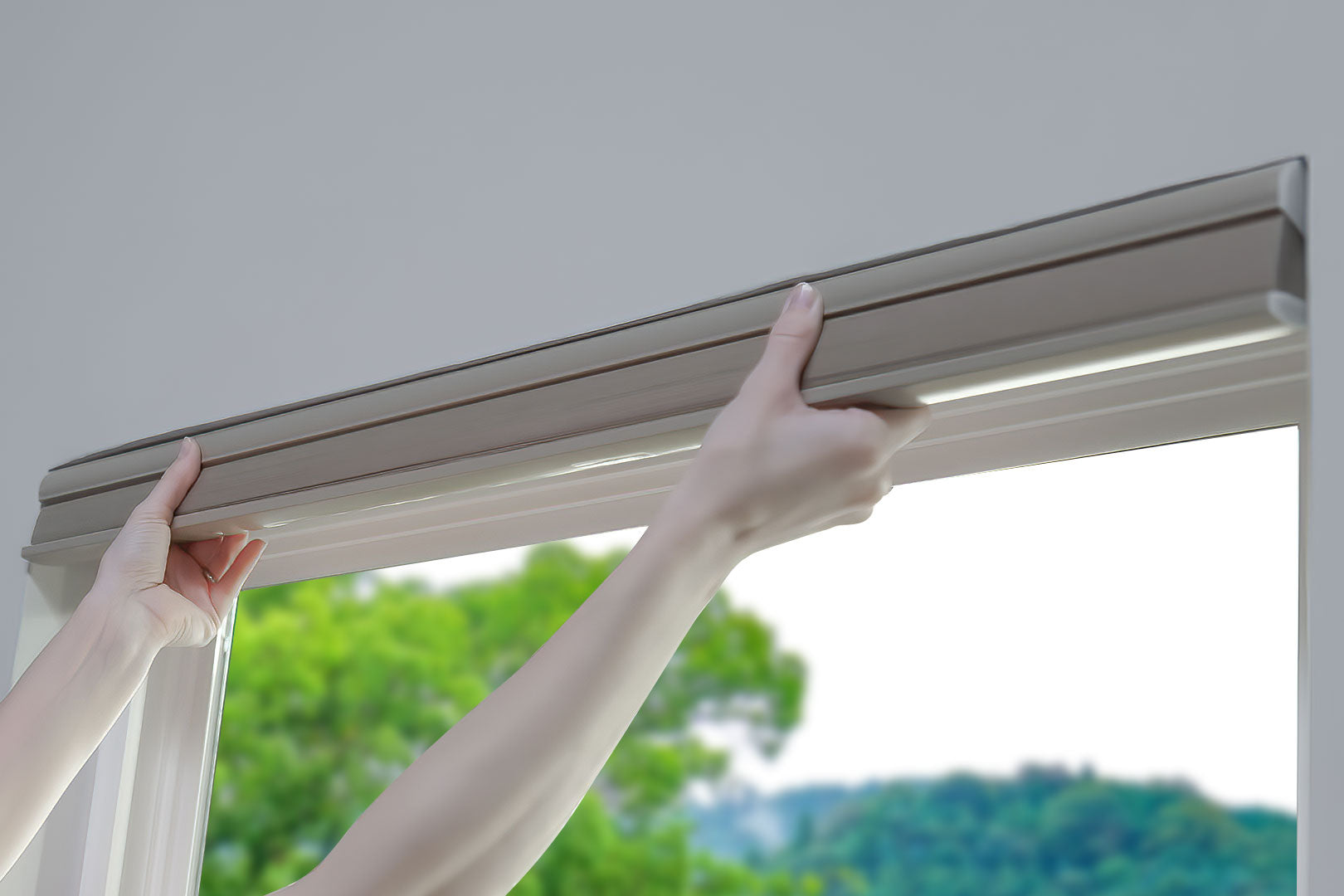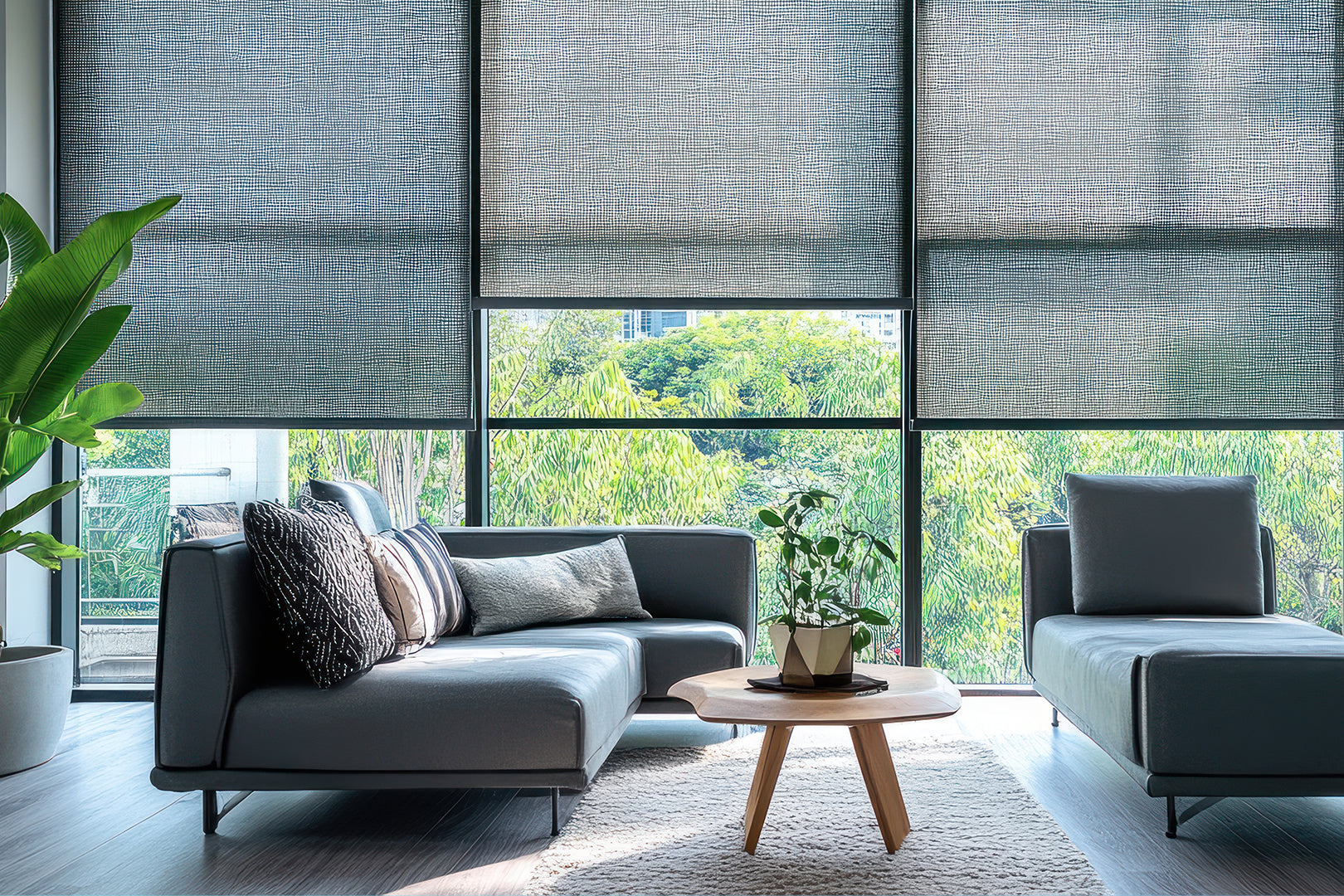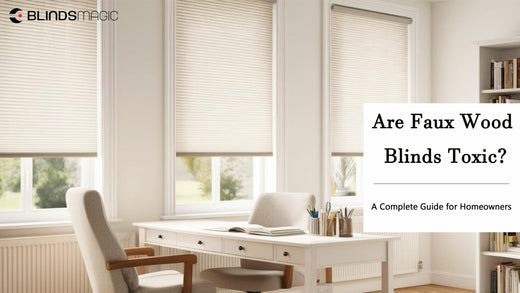
You've probably heard whispers about the potential dangers lurking in your home—things like toxic building materials and off-gassing furniture. But what about your window coverings? Could those innocent-looking faux wood blinds be harboring harmful chemicals?
We're here to uncover the truth about faux wood blinds and their potential impact on your health. In this guide, we'll explore:
● What faux wood blinds are made of
● Common toxins found in faux wood blinds
● Health risks associated with these toxins
● How to choose safe and healthy blinds
● Eco-friendly alternatives to consider
Looking for stylish and safe window coverings? Check out Blinds Magic. We offer a wide variety of blinds and shades made from eco-friendly materials. Our products are GreenGuard and OEKO-TEX certified, so you can rest assured they're safe for your family and the environment.
What Faux Wood Blinds Really Are
Faux wood blinds—they look like wood, but they're not. So, what are they exactly? These popular window coverings are typically made from PVC (polyvinyl chloride), a type of plastic. Manufacturers mix PVC with other materials to create a durable, moisture-resistant, and affordable alternative to real wood blinds.
Here's a closer look at the components:
● PVC: This is the main ingredient that provides the structure and stability of the blind.
● UV Inhibitors: These additives protect the blinds from fading and discoloration caused by sunlight.
● Plasticizers: These make the PVC more flexible and less brittle.
● Pigments: These give the blinds their color, often mimicking various wood tones.
While faux wood blinds offer several practical benefits (hello, easy cleaning), it's important to be aware of the potential downsides. Some of the chemicals used in their production can raise health concerns.
What's Hiding in Your Faux Wood Blinds?
While faux wood blinds may seem harmless, they can contain some not-so-friendly chemicals. These toxins can off-gas into your home, potentially affecting your indoor air quality and health.
Here are some of the usual suspects:
● VOCs (Volatile Organic Compounds): These are chemicals that easily evaporate at room temperature, releasing potentially harmful fumes. VOCs in faux wood blinds can come from the PVC itself, as well as from the adhesives and finishes used in manufacturing.
● Phthalates: These plasticizers, often added to PVC to make it more flexible, have been linked to hormone disruption and other health issues.
● Formaldehyde: This colorless gas, used in some glues and resins, is a known carcinogen. While it may not be present in all faux wood blinds, it's definitely something to watch out for.
● Lead: While lead is less common in blinds manufactured today, older faux wood blinds might contain lead-based pigments.
That's a lot to take in, but don't panic just yet. In the next section, we'll discuss the specific health risks associated with these toxins. More importantly, we'll show you how to choose safe and healthy alternatives.
The Health Risks: What You Need to Know

Now for the not-so-fun part. Those toxins we talked about in the last section? They can have some real consequences for your health. Let's break it down:
VOCs and Your Respiratory System
VOCs can irritate your eyes, nose, and throat, and even trigger asthma attacks. Think coughing, wheezing, and shortness of breath. Long-term exposure to VOCs may also increase your risk of respiratory infections and other health problems.
Phthalates and Hormone Disruption
Phthalates are endocrine disruptors, meaning they can interfere with your body's hormones. This can lead to a whole host of issues, including:
● Reproductive problems: Phthalates have been linked to fertility issues in both men and women.
● Developmental issues in children: Exposure to phthalates during pregnancy and early childhood has been associated with developmental delays and behavioral problems.
● Increased risk of certain cancers: Some studies suggest that phthalates may increase the risk of breast cancer and other hormone-related cancers.
Formaldehyde and Cancer Risk
Formaldehyde is a known carcinogen, meaning it can cause cancer. Exposure to formaldehyde has been linked to an increased risk of leukemia and nasopharyngeal cancer.
Lead Poisoning
Lead is particularly dangerous for young children. Lead exposure can cause developmental delays, learning disabilities, and behavioral problems. In adults, lead poisoning can lead to kidney problems, high blood pressure, and even heart disease.
Choosing Safe Blinds: Your Guide to a Healthier Home
You can have stylish window coverings without compromising your health. Here's how to choose safe and healthy blinds:
Read the Label (Like, Really Read It)
Look for blinds that are certified as low-VOC or VOC-free. Certifications to watch for include:
● GreenGuard Gold: This certification ensures that products meet strict standards for low chemical emissions.
● OEKO-TEX: This certification indicates that the product has been tested for harmful substances.
Don't be afraid to ask the manufacturer for detailed information about the materials used in their blinds.
Go Natural (When Possible)
Natural materials are generally a safer bet than synthetic ones. Consider these options:
● Real wood blinds: These are a classic choice and a great alternative to faux wood. Look for blinds made from sustainable wood sources.
● Bamboo blinds: Bamboo is a fast-growing, renewable resource, and bamboo blinds offer a natural, eco-friendly option.
● Cotton or linen blinds: These fabrics offer a light and airy feel and are generally free of harmful chemicals.
Ventilate As Much As You Can
Proper ventilation is key to reducing indoor air pollution. Open your windows regularly to let fresh air in, especially when you first install new blinds.
Consider Your Needs
Think about where you'll be installing the blinds. If it's a high-humidity area like a bathroom, faux wood blinds might be a more practical choice due to their moisture resistance. However, for bedrooms and living areas, consider safer alternatives like real wood or bamboo.
Choose Blinds Magic
At Blinds Magic, we're committed to providing safe and stylish window coverings. Our blinds and shades are crafted from eco-friendly materials and are GreenGuard Gold and OEKO-TEX certified. You can feel good about choosing Blinds Magic for your home.
Exploring Eco-Friendly Alternatives

Ready to ditch the faux wood and embrace a greener lifestyle? We've got you covered. Here are some fantastic eco-friendly alternatives to consider:
Bamboo Blinds: The Sustainable Superstar
Bamboo is a rapidly renewable resource that grows like wildfire (not literally, thankfully). Bamboo blinds are lightweight, durable, and come in a variety of styles and colors. Plus, they add a touch of natural beauty to any room.
Why we love bamboo:
● Sustainability: Bamboo grows much faster than trees, making it a more sustainable choice.
● Durability: Bamboo is surprisingly strong and can withstand daily wear and tear.
● Moisture resistance: Bamboo is naturally resistant to moisture, making it a good choice for bathrooms and kitchens.
Blinds Magic offers a stunning collection of bamboo blinds in various colors and styles. Check them out.
Wood Blinds: A Classic Choice
Wood blinds are a timeless option that never goes out of style. When choosing wood blinds, look for those made from sustainably harvested wood.
Why we love wood blinds:
● Natural beauty: Wood adds warmth and elegance to any space.
● Versatility: Wood blinds come in various colors and finishes to match any decor.
● Durability: With proper care, wood blinds can last for decades.
Look for FSC (Forest Stewardship Council) certified wood blinds to ensure they come from responsibly managed forests.
Organic Cotton or Linen Blinds: Light and Airy
For a softer look, consider blinds made from organic cotton or linen. These natural fabrics are breathable and free of harmful chemicals.
Why we love organic cotton and linen blinds:
● Eco-friendly: Organic cotton and linen are grown without the use of harmful pesticides and chemicals.
● Breathability: These fabrics allow air to circulate, helping to keep your home cool and comfortable.
● Style: Cotton and linen blinds offer a relaxed, natural aesthetic.
Ready to make the switch? Explore the beautiful and sustainable options available at Blinds Magic today.
Create a Healthier Home with Safe Blinds
So there you have it—the truth about faux wood blinds and their potential impact on your health. Understanding the risks and choosing safe alternatives can create a healthier and more sustainable home for you and your family.
Here are the key takeaways to remember:
● Faux wood blinds can contain harmful chemicals like VOCs, phthalates, and formaldehyde.
● These toxins can off-gas into your home, affecting your indoor air quality and health.
● Choose blinds made from natural materials like wood, bamboo, or organic cotton.
● Look for certifications like GreenGuard Gold and OEKO-TEX.
● Ventilate your home regularly to reduce indoor air pollution.
At Blinds Magic, we believe your home should be a sanctuary, not a source of stress. That's why we offer a wide selection of safe, stylish, and eco-friendly window coverings. Browse our collection today and discover the perfect blinds for your healthy home.
FAQs
Is faux wood toxic?
While faux wood blinds aren't exactly poisonous, they can contain chemicals that off-gas into your home, potentially affecting your health. These chemicals include VOCs, phthalates, and sometimes even formaldehyde. The level of toxicity varies depending on the specific materials and manufacturing processes used.
What are the disadvantages of faux wood blinds?
Besides the potential toxicity we've discussed, here are some other drawbacks of faux wood blinds:
● Susceptibility to heat: Faux wood blinds can warp or fade when exposed to extreme heat or direct sunlight.
● Heavier weight: Compared to real wood blinds, faux wood blinds can be heavier, making them more difficult to lift and operate.
● Less authentic look: While they mimic the appearance of wood, faux wood blinds may lack the natural grain and texture of real wood.
What blinds are non-toxic?
Looking for truly non-toxic options? Consider these:
● Blinds Magic's eco-friendly collection: We offer a variety of blinds made from sustainable materials like bamboo and organic cotton. Our products are GreenGuard Gold and OEKO-TEX certified, ensuring they're free from harmful chemicals.
● Real wood blinds: Opt for blinds made from sustainably sourced wood and finished with non-toxic stains and sealants.
● Cellular shades: These shades are often made from non-toxic fabrics and offer excellent insulation benefits.
Are all faux wood blinds made of PVC?
Yes, most faux wood blinds are primarily made from PVC (polyvinyl chloride). However, the specific composition can vary depending on the manufacturer. Some may use a blend of PVC and other materials to enhance durability or mimic the look of real wood more closely.
What are faux wood blinds made of?
Faux wood blinds are typically made from PVC, along with various additives like:
● UV inhibitors: To protect against fading from sunlight
● Plasticizers: To make the PVC more flexible
● Pigments: To create different colors and wood-grain effects
What types of wood are non-toxic?
When choosing wood blinds, opt for those made from solid wood, rather than composite wood, which may contain formaldehyde. Here are some non-toxic wood options:
● Basswood: A lightweight and sustainable hardwood.
● Bamboo: A fast-growing, renewable grass (yes, it's a grass).
● Cedar: Naturally resistant to insects and decay.
Always look for wood blinds finished with non-toxic stains and sealants.

